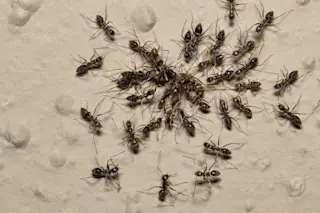A Stone Age campsite on the coast of South Africa has revealed the earliest evidence of early humans who used fire to make better, sharper stone tools. Researchers had been surprised to find spear points and other stone implements made of silcrete, a crumbly rock that doesn't respond well to the flaking, chipping process that early tool-makers employed. But lead researcher Kyle Brown
noticed that many of the ancient blades bore the same glossy sheen as North American tools created from heat-treated stone. "It seemed like the most logical thing to do was take some of this poor quality material that we've been collecting and put it under a fire and see what happens," he says [New Scientist].
Brown buried silcrete stones in a fire pit and kept a roaring fire going for up to 10 hours at a time. When the blaze eventually died down and the rocks had ...













